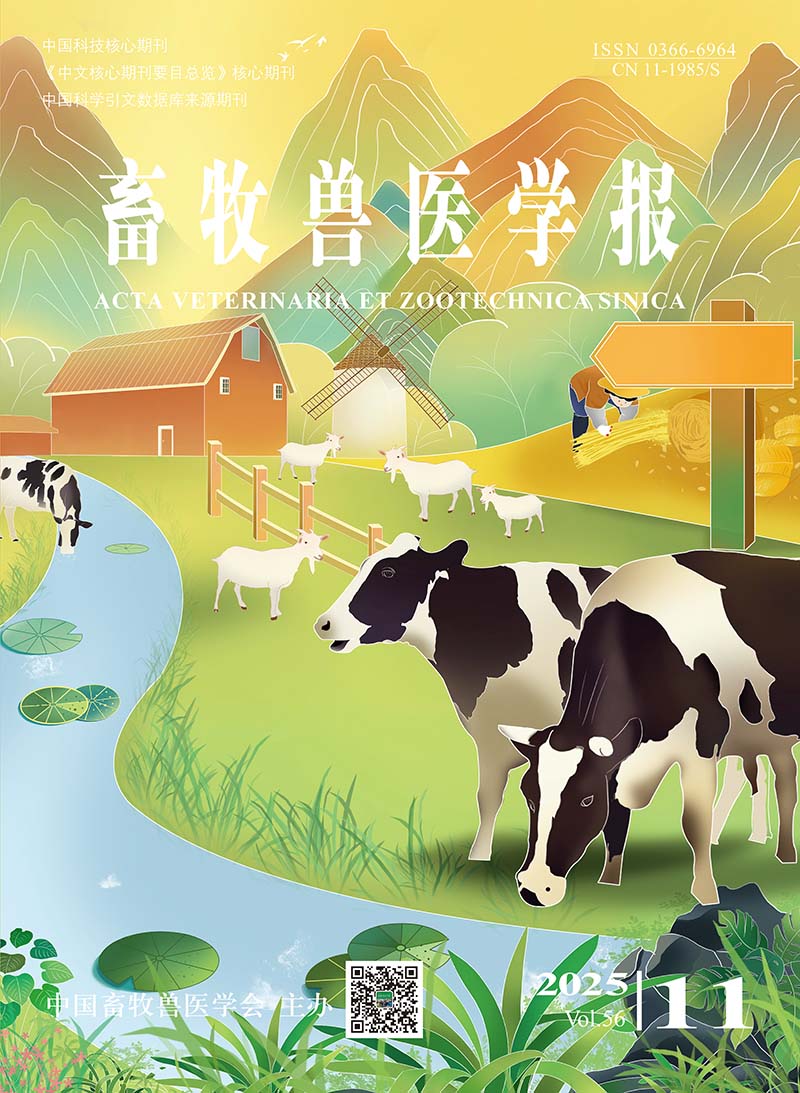-
Unraveling Molecular Mechanism of Acute Immunological Stress Affecting Meat Quality of Broiler Chickens by Proteomics Analysis
- ZHANG Anrong, WU Zhengke, CHEN Zhimin, CHANG Wenhuan, CAI Huiyi, LIU Guohua, ZHENG Aijuan
-
2021, 52(8):
2138-2150.
doi:10.11843/j.issn.0366-6964.2021.08.007
-
 Abstract
(
344 )
Abstract
(
344 )
 HTML( )
HTML( )
 PDF (2918KB)
(
458
)
PDF (2918KB)
(
458
)
-
References |
Related Articles |
Metrics
The aim of this study was to investigate molecular mechanism of the effects of immunological stress on pectoralis major (PM) meat quality of AA broilers. The effects of immunological stress on the proteomic changes of PM of AA broilers were studied by using the label-free LC-MS proteomics technique. One hundred and twenty healthy one-day-old male AA broilers were randomly divided into control group and immunological stress group challenged with Escherichia coli lipopolysaccharide (LPS), with 6 replicates per treatment and 10 chickens per replicate. At the age of 36, 38 and 40 days, 1 mL of sterile saline for control group or LPS dissolved in saline at an approximate dose of 5.0 mg·kg-1 of bodyweight for immunological stress group was injected intraperitoneally, respectively. At the age of 42 days, 2 broilers were selected from each replicate randomly, and the tissue samples of PM were collected for measuring the drip loss, cooking loss, inosine monophosphate (IMP) content and pH, and the qualitative and quantitative analysis of proteomics were performed. The results showed that:1) Compared with the control group, immunological stress significantly increased the drip loss and cooking loss of PM of broilers (P<0.05), and significantly reduced the content of IMP (P<0.05); Immunological stress had no significant effect on pH of PM of broilers slaughtered after 24 and 48 h (P>0.05); The cross sectional perimeter and area of PM muscle fiber in immunological stress group were significantly increased (P<0.01). 2) The results of qualitative proteomics analysis showed, in the control group, the specially expressed proteins were enriched in cell respiration, aerobic respiration, hexose metabolism and biosynthesis, monosaccharide biosynthesis, glucose metabolism and gluconeogenesis; While, in the immunological stress group, the specially expressed proteins were enriched in the tight junction metabolic pathway, the biological processes included macromolecular complex decomposition and protein metabolism, decomposition and depolymerization of protein, synthesis and metabolism of nucleic acid and glycosyl compounds, metabolism of nucleobase-containing small molecule. 3) Quantitative proteomics analysis showed that:21 proteins were differentially expressed in the immunological stress group and the control group, 15 of which were up-regulated and 6 were down-regulated in the immunological stress group; The up-regulated proteins in the immunological stress group included the proteins involved in carbohydrate metabolism and energy production (AMPD1, GPD1L2, LDHA, UQCRC2), muscle contraction related proteins (MYH1C, MYH1A, CASQ2, TMEM38A) and proteins involved in immunological response to protect cells from damage (HMGB1, PPP1R1A, LOC101747971, PRDX1,1ABCF2); The down-regulated protein in the immunological stress group were HBBA, CS, ATP5A1WL, HSP90B1, ABCB6 and SYNJ2. The results indicated that immunological stress induced by LPS increased the muscle fiber area, reduced the cell hydraulic holding capacity of muscle cells, and resulted in the poor meat quality by changing the expression of proteins related to the energy metabolism and muscle contraction in PM.






